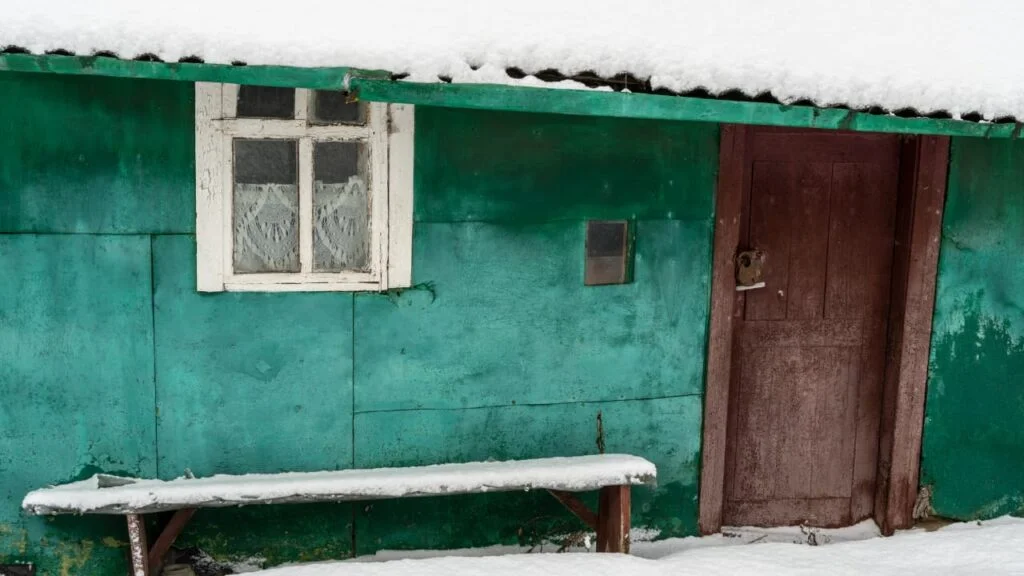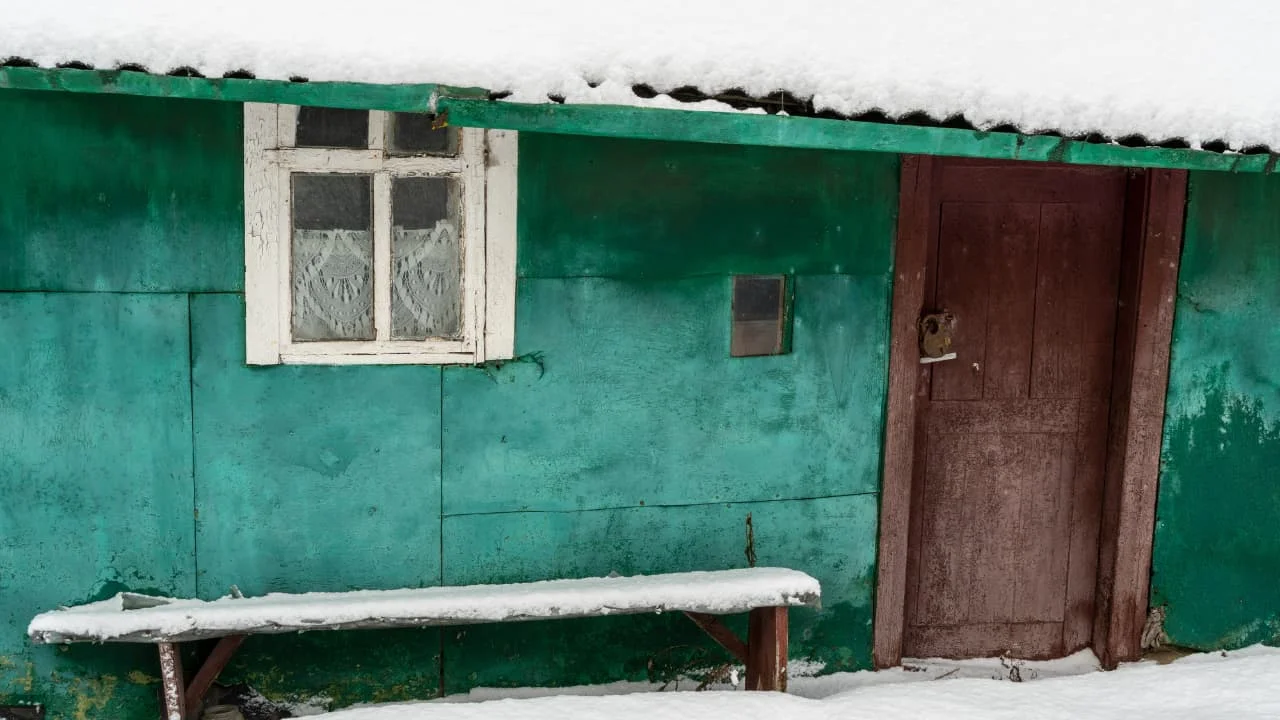Embrace the Winter Charm: Unveiling the Secrets of Exterior Paint in Winter!
As the winter months set in, many homeowners wonder if it is possible to paint the exterior of their houses during this cold season. It’s true that painting the exterior of a house in winter comes with its challenges, but with the right knowledge and preparation, it can be done successfully. In this article, we will explore when the best time to paint the exterior of your house in winter is, whether you can paint in below-freezing air and surface temperatures here, what factors to consider before embarking on the project, and how to properly paint in cold weather. Let’s dive in!
Table of Contents

When is the best time to paint the exterior of your house in winter?
Before you start painting the very chill exterior walls of your house in winter, there are a few factors to consider. One of the most important considerations is the surface temperature. Paint needs the right temperature to adhere properly and dry effectively. If the surface temperature is too cold, the paint may not bond correctly and could lead to peeling and cracking in the future.
Another aspect to keep in mind is how paint dries in colder weather. Lower temperatures can significantly slow down the drying process of latex paints, which means it may take longer for the paint to cure. This delay can be frustrating, especially when you need to protect the freshly painted surface from the elements.
Lastly, it’s essential to understand the risks associated with painting the exterior in winter. Low temperatures and high humidity can affect the overall finish of the paint job. Additionally, frost and dew can form on the surface, causing the paint to become uneven and potentially ruining the final result.
Can you paint the exterior of your house in below-freezing temperatures?
While it is technically possible to paint the exterior of your house in below-freezing temperatures, it is generally not recommended. Most paints have specific temperature ranges in which they perform best. For exterior painting in winter, it is generally recommended to wait for the temperature to be consistently above freezing, around 35 degrees Fahrenheit.
Painting in temperatures below freezing can pose several challenges to exterior paint jobs. The paint may not adhere properly to the surface, leading to a compromised paint job that may fail prematurely. Additionally, the freezing temperatures can cause the paint to freeze on your brush or roller, making it challenging to apply the paint evenly.
If you are unsure about painting in winter temperatures, it is best to consult with a professional painter. They have the experience and knowledge to determine the optimal conditions for painting your house and can provide expert advice on the best course of action.
What should homeowners consider before painting the exterior in winter?
Before undertaking an exterior paint job in winter, homeowners should evaluate a few key factors. First and foremost, it is crucial to ensure that the house is adequately prepared for painting in cold weather. This includes cleaning the surface, repairing any damaged areas, and ensuring proper insulation to prevent heat loss during the painting process.
Dew is another important consideration when using oil paints and painting in cold weather. Dew can form overnight or during early mornings, and it can affect the paint’s ability to adhere properly. To mitigate this issue, it is recommended to paint during the warmest hours of the day, when the dew has had a chance to evaporate.
One advantage of painting the house exterior in winter is that the paint may dry faster due to the air and the low humidity levels. This can be beneficial when you want to complete the project quickly and avoid potential complications caused by prolonged drying times.
How to properly paint the exterior in cold weather?
To achieve a successful exterior paint job in cold weather, it is essential to follow the right steps and use the appropriate materials. When it comes to choosing paint for winter exterior and interior painting, opt for formulations specifically designed for low temperatures. These paints are formulated to dry at lower temperatures and provide better adhesion in cold weather.
Before painting, carefully prepare the surface by cleaning it thoroughly and removing any loose or flaking paint. Additionally, make sure to prime any bare or exposed areas to ensure proper coverage and adhesion of the topcoat.
It’s also important to note that the preparation process for painting in winter might differ slightly from other seasons. For instance, you may need to use additional primers or adjust the drying times between coats to accommodate painting in the winter with colder temperatures.
What other factors should you consider for a successful exterior paint job in winter?
Aside from temperature considerations, there are other factors to keep in mind for a successful exterior paint job in winter. The drying time of paint can be significantly affected by the winter weather. Low temperatures and high humidity can prolong the drying process, so it’s crucial to monitor the weather conditions and plan accordingly.
Furthermore, different exterior surfaces may require specific treatments or preparations for painting in cold weather. For example, wood surfaces might need additional moisture protection to prevent swelling or warping caused by winter elements. It’s essential to consult the paint manufacturer’s guidelines and follow the recommended procedures for each type of surface.
Lastly, to protect your freshly painted exterior from the harsh winter elements, consider applying an additional layer of protection, such as a clear coat. This can help shield the paint from dirt, moisture, and UV rays, extending the lifespan of your paint job.
In conclusion, painting the exterior of your house in winter can be done successfully with the right knowledge and preparation. By considering factors such as temperature, surface preparation, and paint selection, you can achieve a professional-looking paint job that withstands the winter elements. If you are uncertain about tackling the whole painting project by yourself, it’s advisable to consult with a professional painting contractor who can provide expert guidance and ensure a smooth and durable finish. Happy winter painting!
FAQs Paint Your Home During Colder Weather Questions
Q: Can I paint my home’s exterior in cold weather?
A: Yes, you can paint your home’s exterior in cold weather, but there are certain conditions and precautions you need to take.
Q: Is it recommended to hire a painter for exterior painting in cold weather?
A: It is highly recommended to hire a professional painter who has experience in working with exterior painting in cold weather conditions.
Q: What are the challenges of painting the exterior of a house in the winter?
A: The main challenge of painting the exterior of a house in the winter is the lower surface temperature, which affects how the paint dries and adheres to the surface.
Q: Can I use the same type of paint for the exterior in the winter as I do in the summer?
A: Yes, you can use the same type of paint for the exterior in the winter as you do in the the summer months, but it’s best to choose a paint that is specifically formulated for colder weather conditions
Q: What is the ideal outdoor temperature range for painting the exterior of a house in the winter?
A: The ideal outdoor temperature range for painting the exterior of a house in the winter is between 40°F (4°C) and 50°F (10°C).
Q: What is the curing temperature for exterior paint?
A: The curing temperature for exterior latex paint is usually around 50°F (10°C) or above. It’s important to check the manufacturer’s instructions for specific curing temperature recommendations.
Q: Should I paint the outside of my house during the winter or wait until summer?
A: If you need to paint the outside of your house and it’s currently winter, you can proceed with caution as long as you follow proper guidelines for painting in cold weather.
Q: Can I use interior paint for the exterior of my home?
A: No, you cannot use interior paint for the exterior of your home. Interior paint is not designed to withstand outdoor conditions and will not provide adequate protection.
Q: When is the best time to start painting in the late morning?
A: The best time to start painting in the late morning is after the surface temperature has warmed up a bit but before it gets too hot in the afternoon.
Q: Is it possible to paint a front door in cold weather?
A: Yes, it is possible to paint a front door in cold weather, but you need to ensure that you are using the right type of paint and following proper application techniques.

